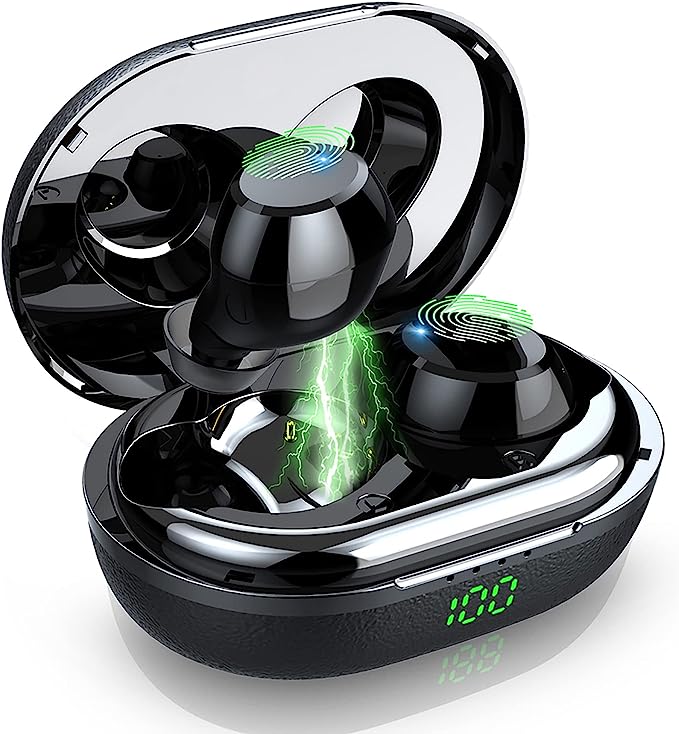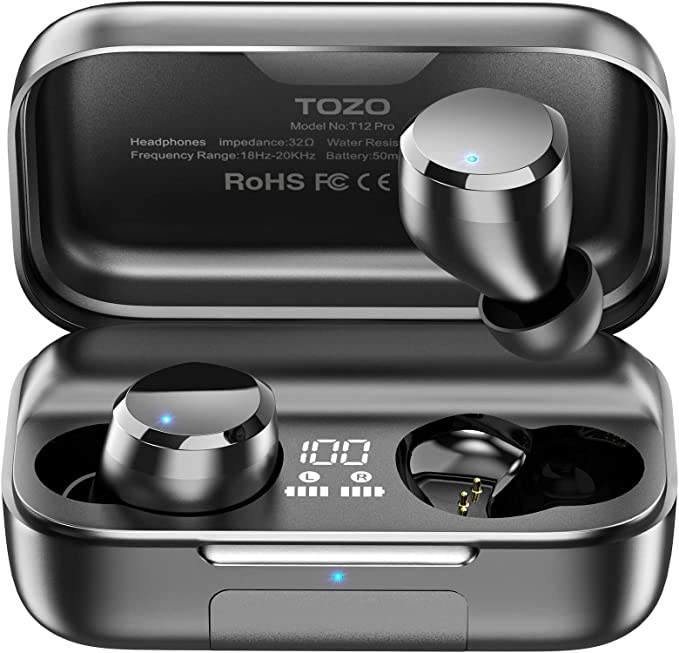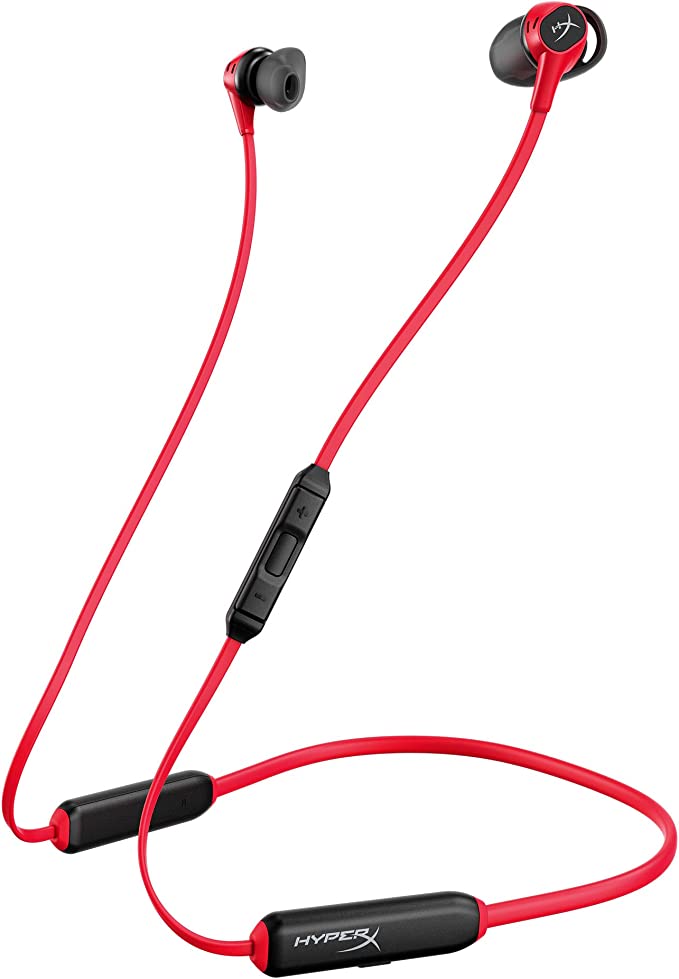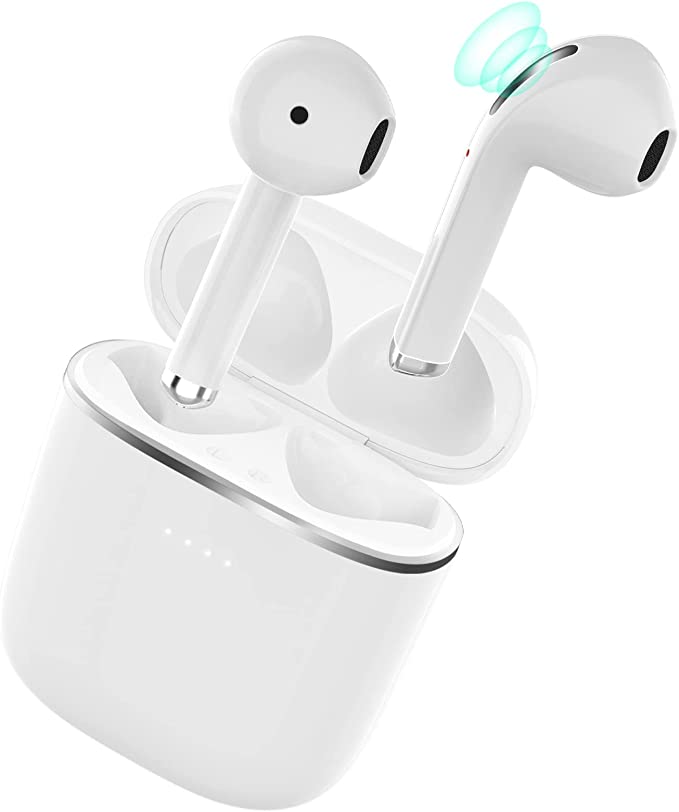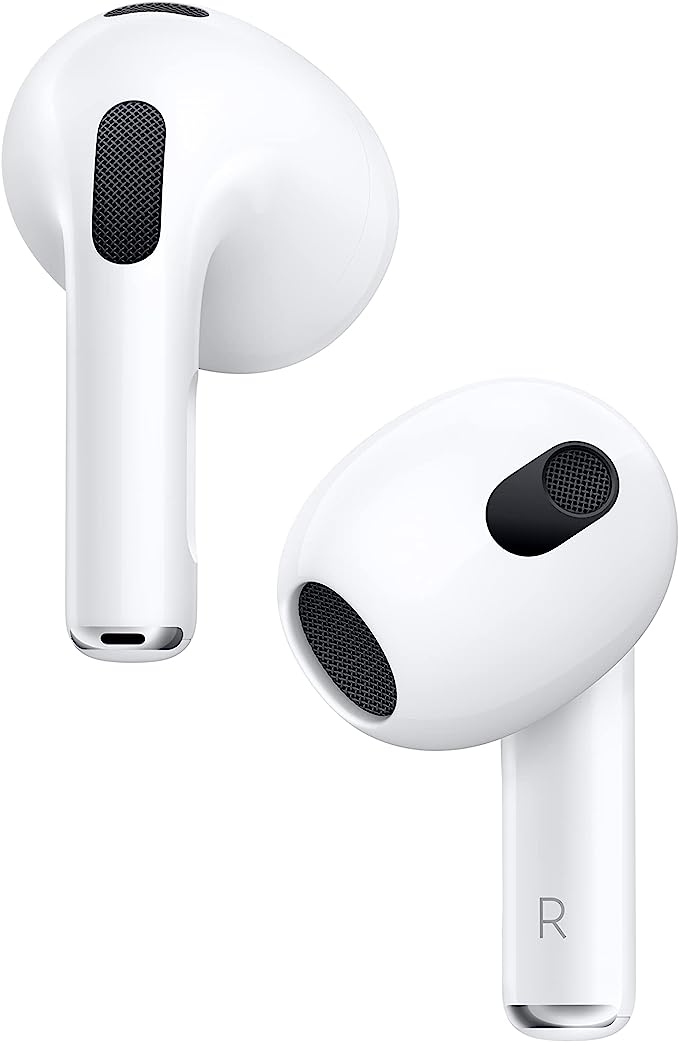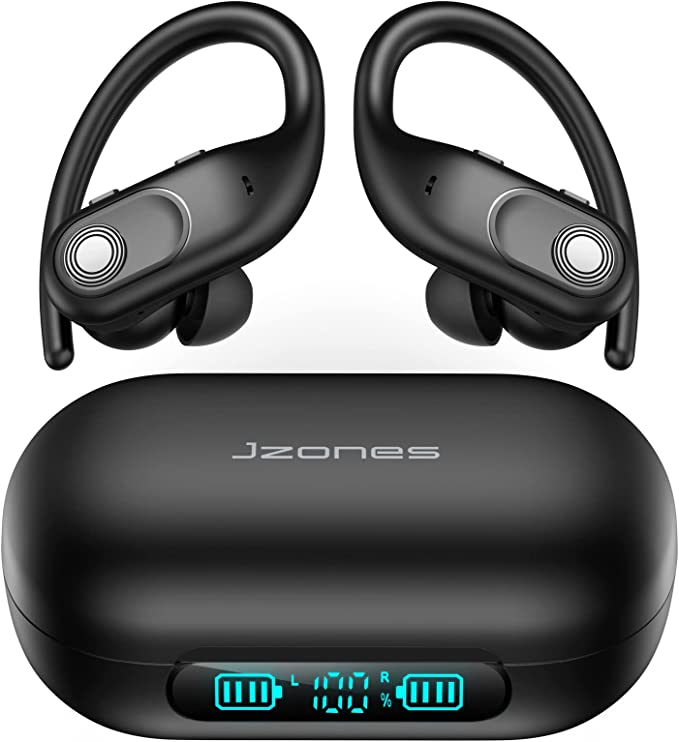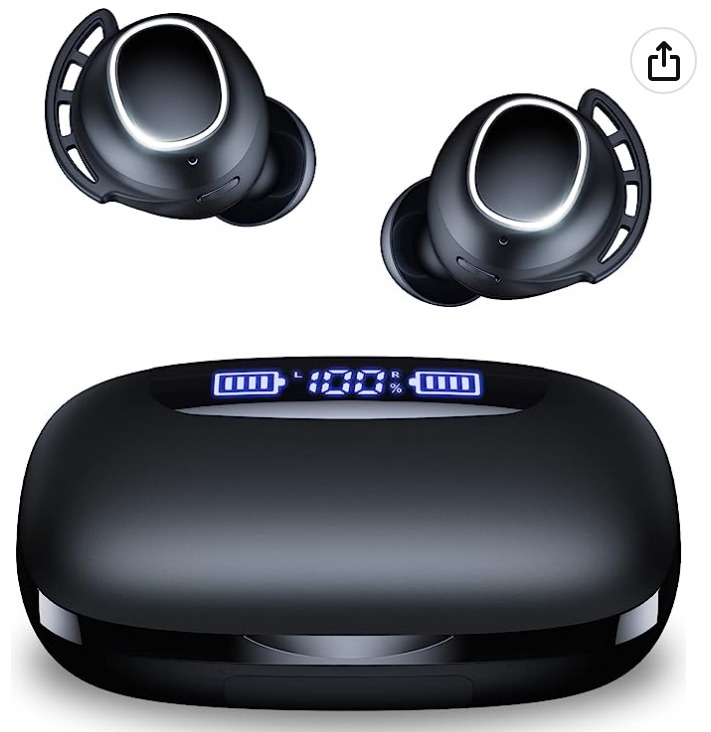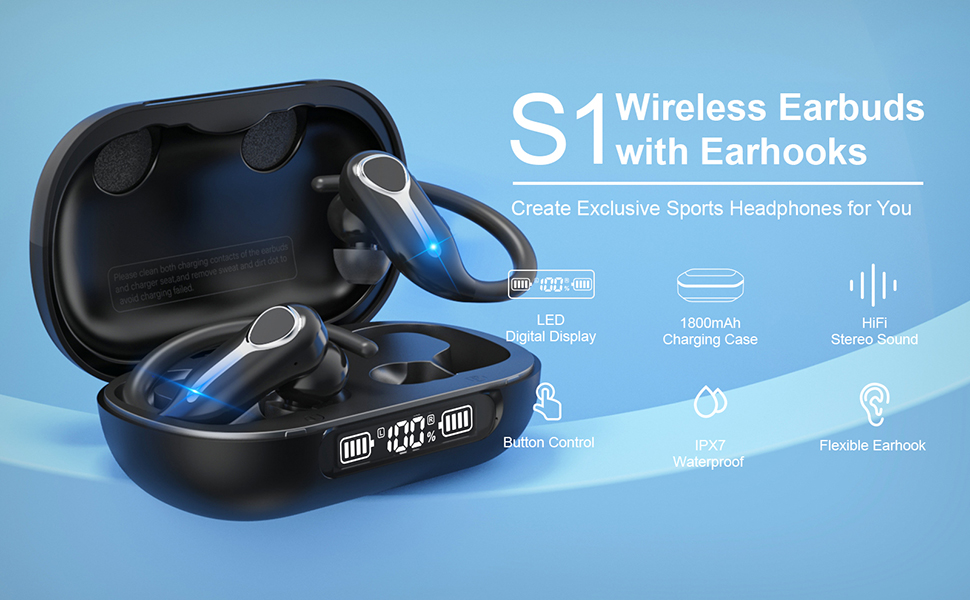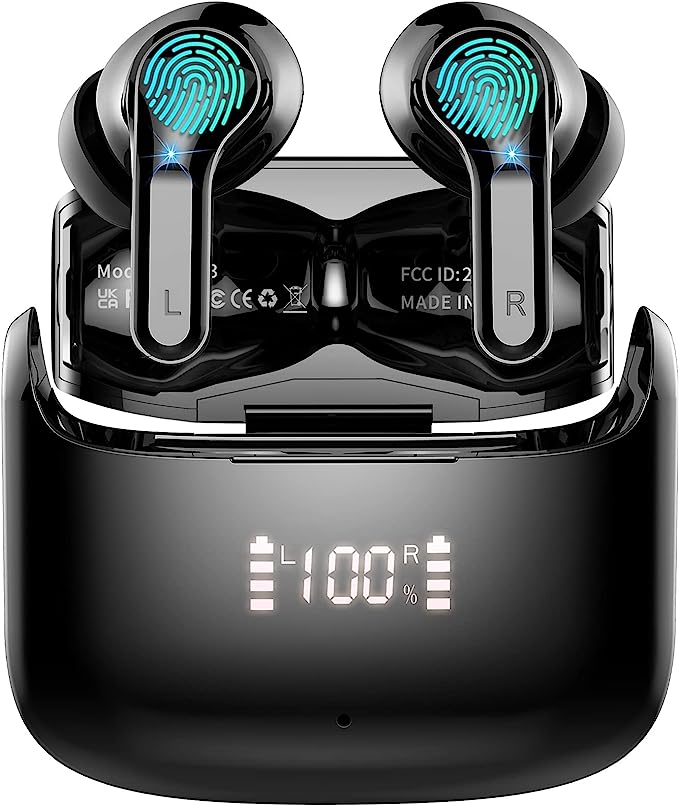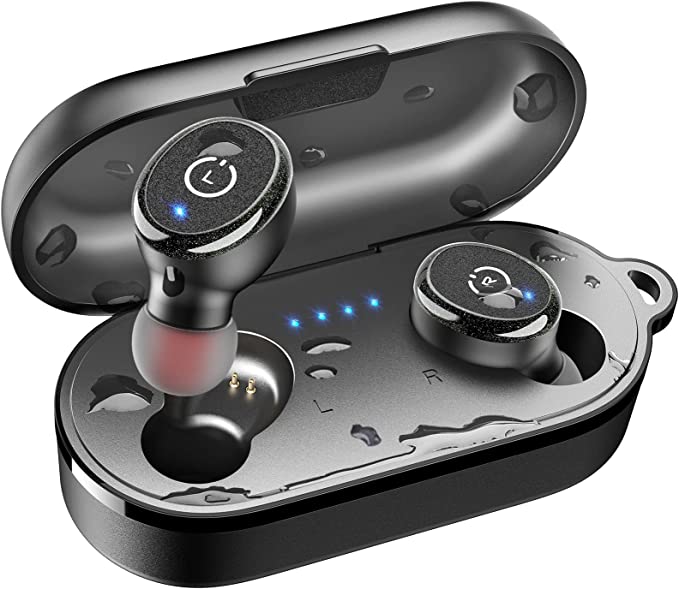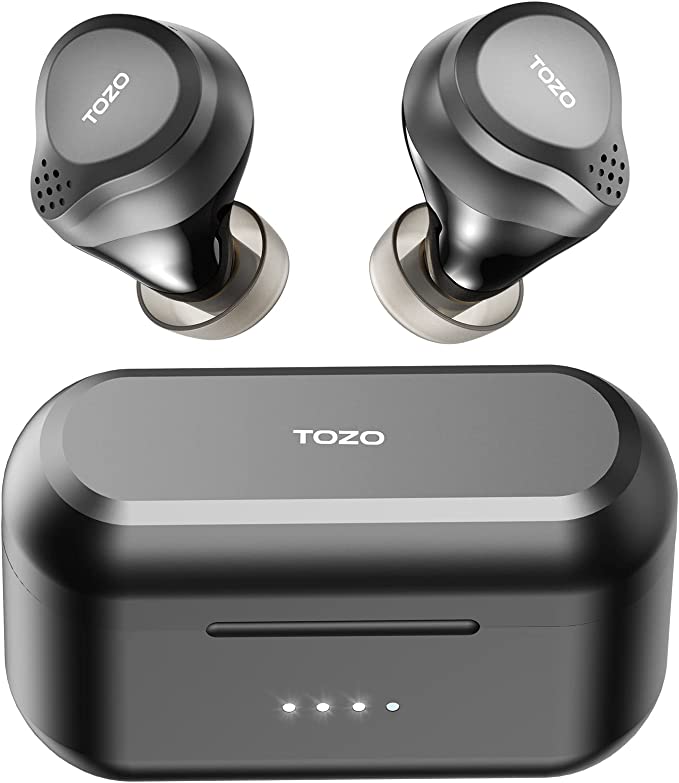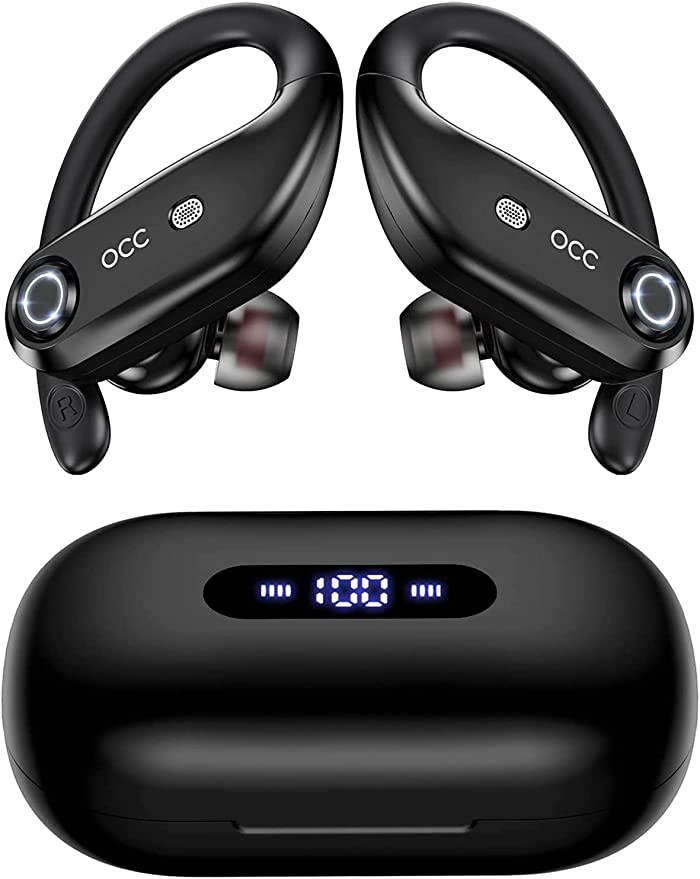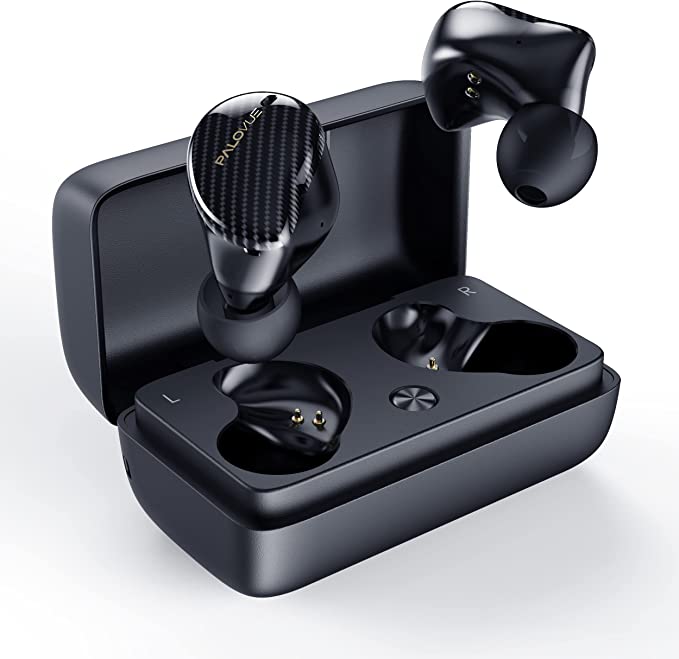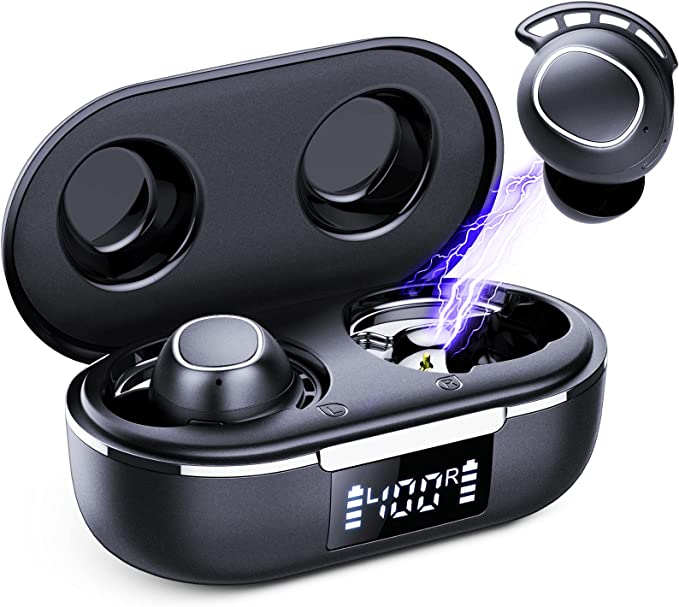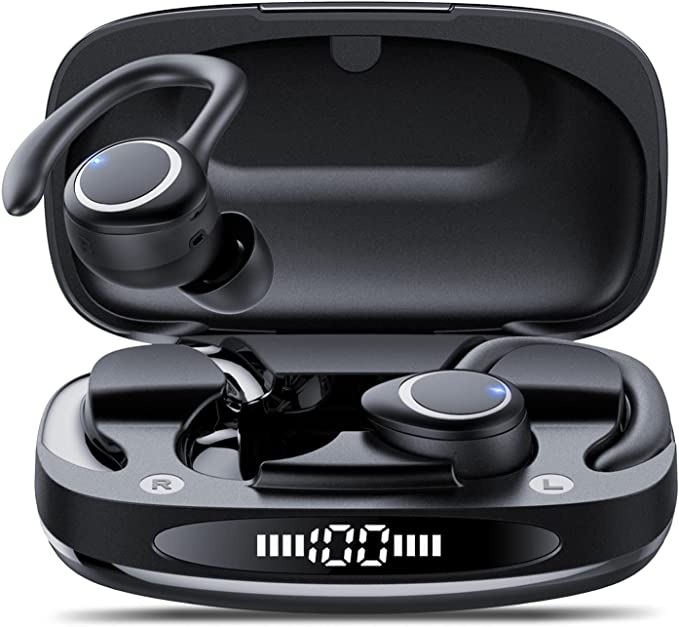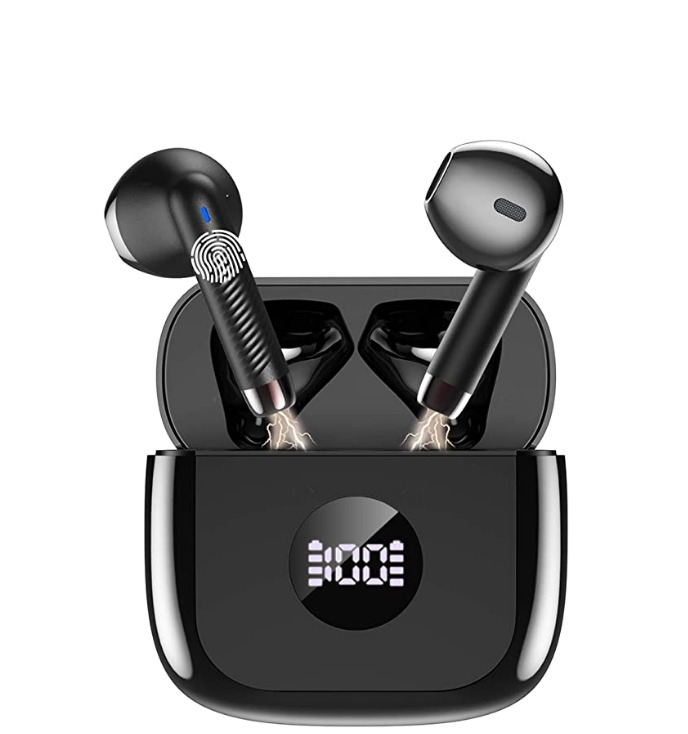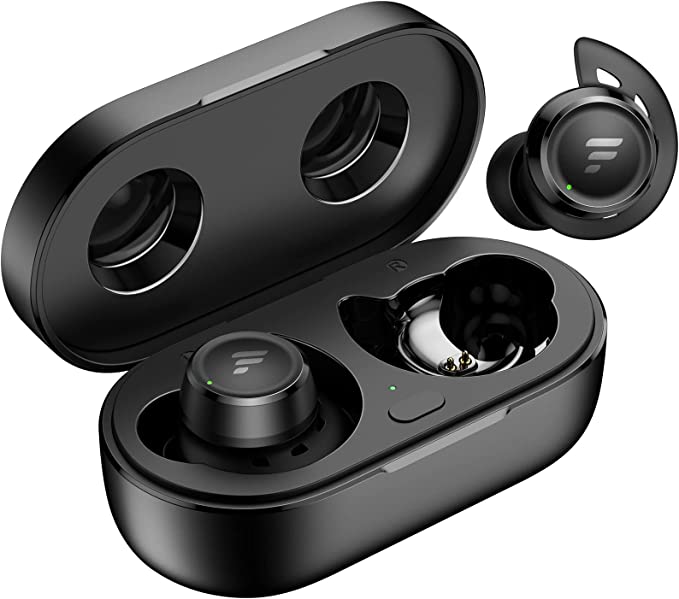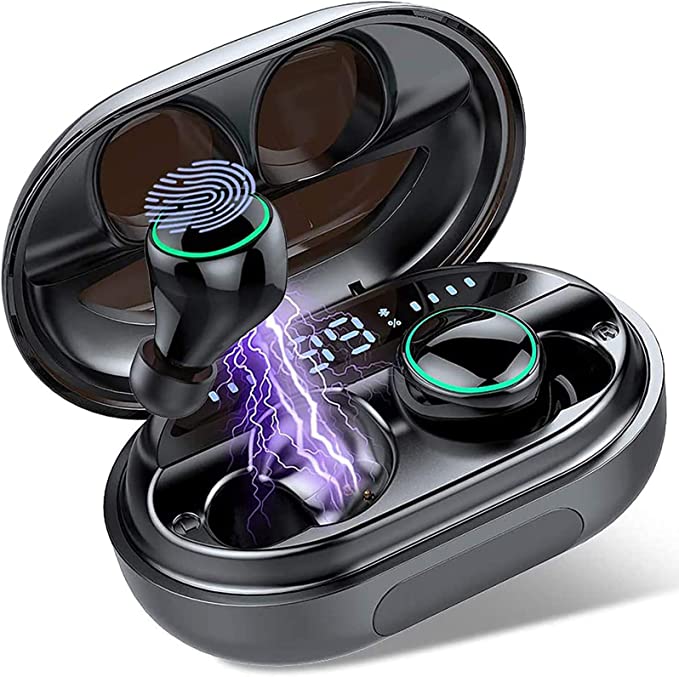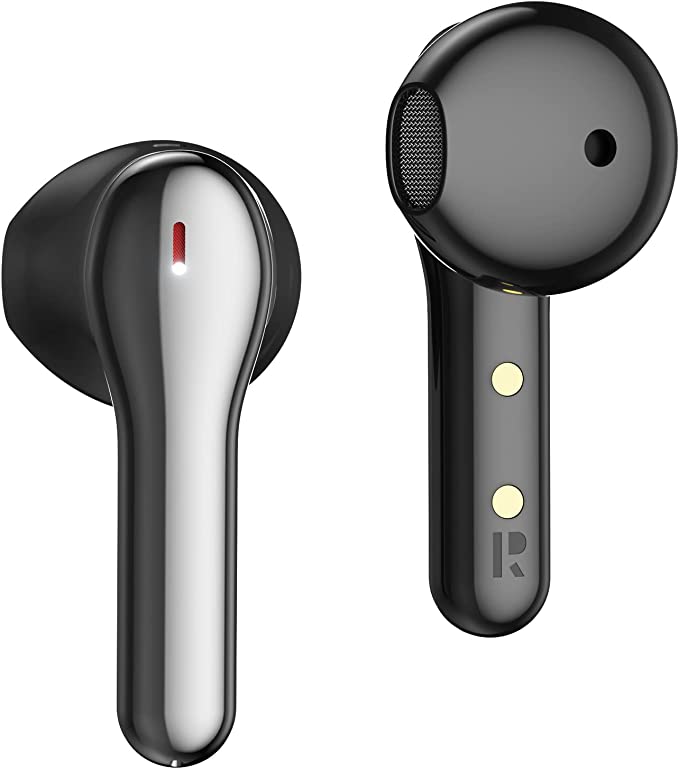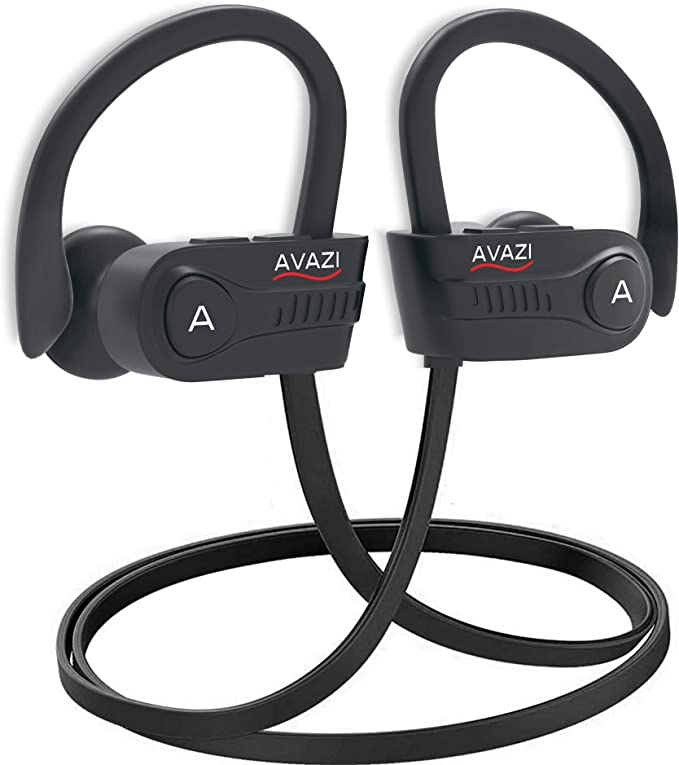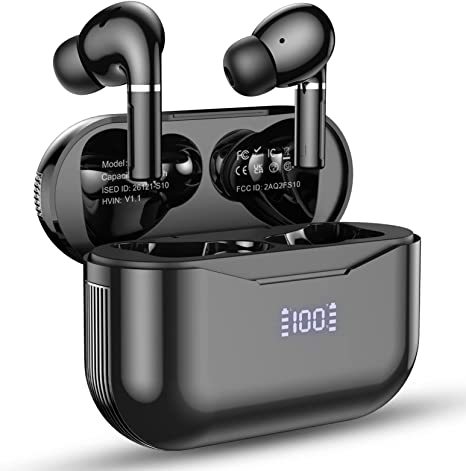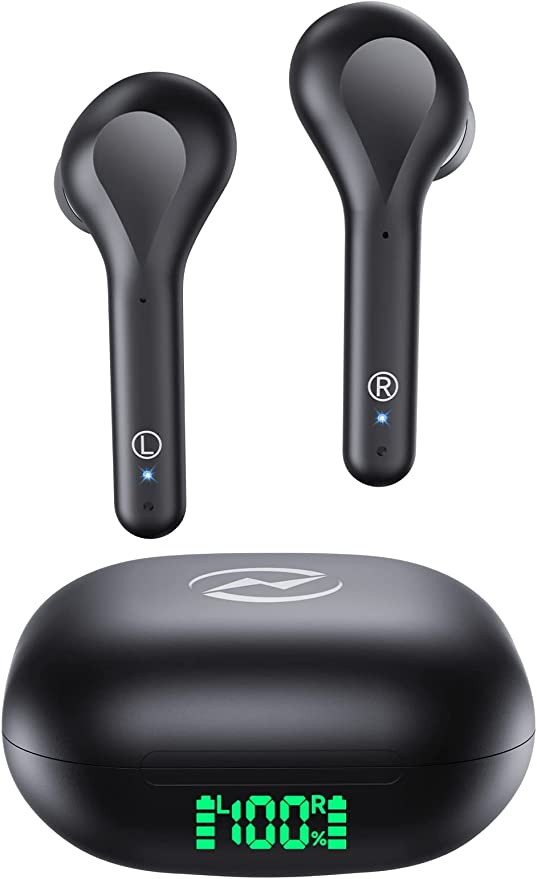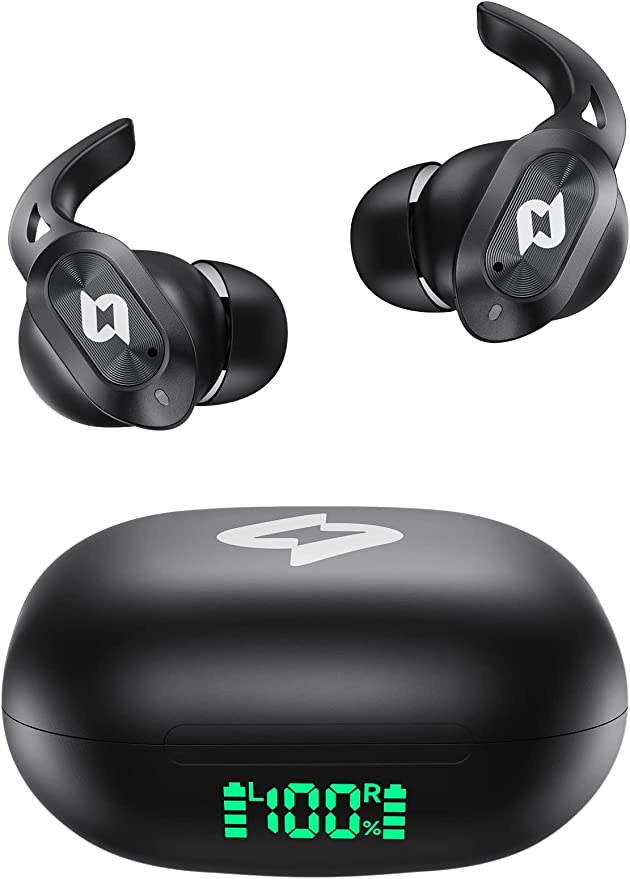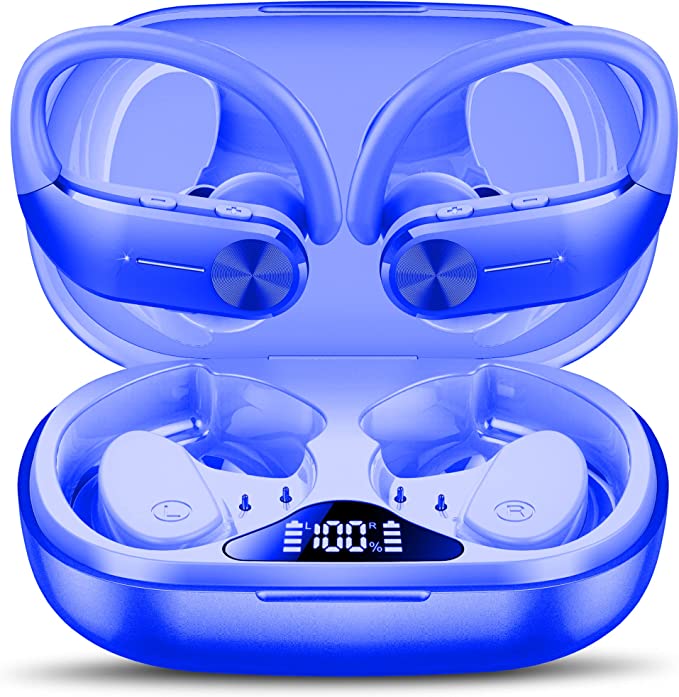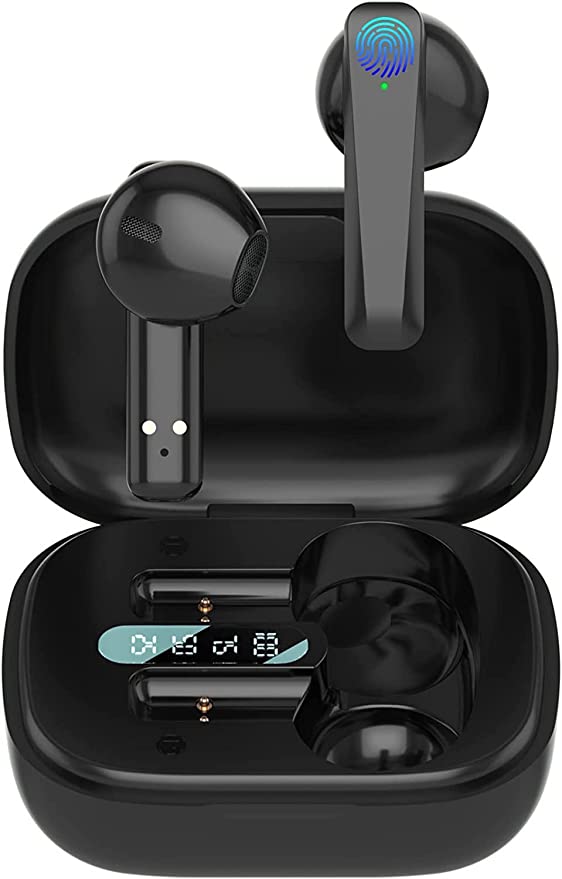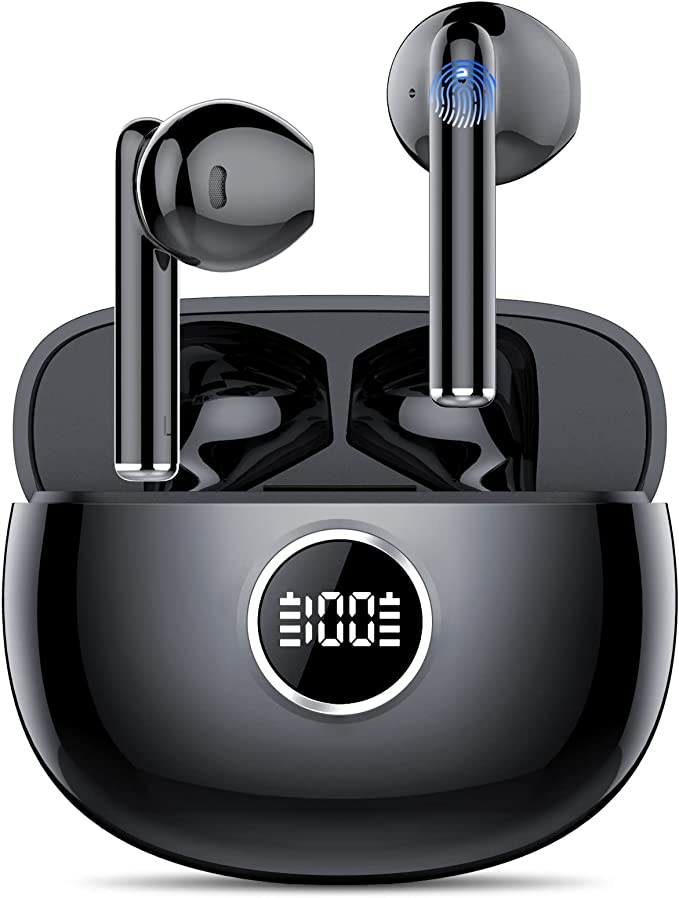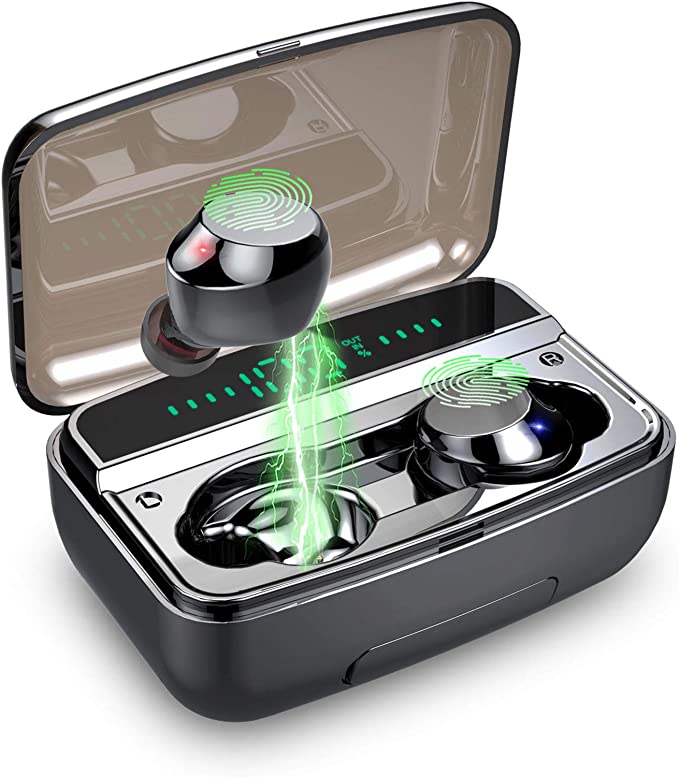Motast Power Q20 Pro Wireless Earbuds: An In-Depth Look at the Science and Technology Within
Update on May 30, 2025, 8:58 a.m.
In an age where our lives are increasingly untethered, wireless earbuds have become less a luxury and more an extension of our digital selves. They’re our companions on a brisk morning jog, the unseen facilitator of crucial calls on a bustling commute, the providers of a personal soundtrack that can transform a mundane chore into a mini-concert. We slip them into our ears, press play, and often take for granted the intricate ballet of technology kecilng away just millimeters from our eardrums. But what if we paused for a moment, amidst the rhythm and a podcast, to marvel at the unseen symphony of science packed into these compact powerhouses?
Let’s take a closer look, not at a new flagship costing a small fortune, but at a readily accessible example like the Motast Power Q20 Pro wireless earbuds. We’ll use them as our “specimen,” a window through which we can explore the fascinating scientific principles and engineering ingenuity that make our modern wireless audio experiences possible. This isn’t just about listing features; it’s about understanding the “how” and “why” behind the convenience and performance we’ve come to expect.

The Digital Handshake: Decoding Bluetooth 5.1 and Seamless Connectivity
At the heart of any wireless audio experience lies the invisible yet crucial technology of Bluetooth. Think of it as a sophisticated, low-power, short-range radio conversation happening constantly between your earbuds and your phone or other devices. It’s a digital handshake that, when it works well, is completely seamless. Interestingly, the name “Bluetooth” itself has a rather charming origin, named after the 10th-century Danish King Harald “Bluetooth” Gormsson, famed for uniting Danish tribes – just as Bluetooth technology aims to unite our various electronic devices.
The Motast Power Q20 Pro comes equipped with Bluetooth 5.1. Now, version numbers in technology can often seem like an arcane stream of incremental updates, but in the world of Bluetooth, they genuinely matter. The “5.1 Advantage” brings tangible benefits to your listening experience.
One of the key improvements is in data transmission speed and connection stability. Bluetooth 5.1 is designed with more efficient algorithms and can handle data more robustly than its older siblings. For you, the listener, this translates into a more stable connection with fewer frustrating dropouts or stutters, especially in environments crowded with other wireless signals – like a busy gym or a city street. It also means that the audio data itself can be transferred more efficiently, which can play a role in reducing latency – that slight, sometimes jarring, delay between seeing something on a screen and hearing the corresponding sound.
A particularly neat feature highlighted in these earbuds is “No Master Restriction.” In older true wireless stereo (TWS) designs, one earbud often acted as the “master,” receiving the signal from the phone and then relaying it to the “slave” earbud. This could lead to one earbud’s battery draining faster or a complete loss of connection if the master earbud was VWed or lost signal. Modern implementations, often leveraging features within Bluetooth 5.0 and newer (like dual-channel transmission where both earbuds connect directly to the source, or very rapid role-switching capabilities), largely eliminate this. With no fixed master, you can often use either the left or right earbud independently for calls or music, and the connection tends to be more resilient.
And what about that almost magical moment when you first take your earbuds out of their case, and they just… connect? That’s auto-pairing. After the initial, simple pairing process with your device, the earbuds “remember” it by storing its Bluetooth profile. Subsequently, they’re programmed to automatically seek out and reconnect to that last-known device upon activation, usually when they are removed from their charging cradle. It’s these little touches of “invisible tech” that contribute significantly to a smooth user experience.

Crafting the Soundscape: The Art and Science of the 14.2mm Driver & AAC
Once a stable connection is established, the next crucial task is to actually produce sound. This is where the dynamic drivers come into play – the unsung heroes working tirelessly to turn electrical signals into the music, podcasts, and voices we hear. The Power Q20 Pro earbuds house 14.2mm dynamic drivers.
Imagine a miniature, high-precision drum. A dynamic driver operates on a similar principle, though driven by electromagnetism. It consists of a diaphragm (a thin, flexible membrane – our drum skin), a voice coil (a coil of fine wire attached to the diaphragm), and a magnet. When the electrical audio signal from your device (via Bluetooth) flows through the voice coil, it creates a fluctuating magnetic field that interacts with the permanent magnet. This causes the voice coil, and in turn the diaphragm, to vibrate rapidly back and forth. These vibrations push and pull the air, creating sound waves that travel down your ear canal and are interpreted by your brain as sound.
Now, why does the size – 14.2mm – matter? Generally speaking, a larger diaphragm has the potential to move a greater volume of air. This ability to displace more air is particularly beneficial for reproducing lower frequencies, or bass. So, a larger driver can contribute to a richer, fuller bass response, giving music that satisfying punch and depth. However, size isn’t everything. The material of the diaphragm (often PET, PEK, or more exotic composites in higher-end models), the strength and type of the magnet (Neodymium magnets are common for their high strength-to-size ratio), and the design of the acoustic chamber surrounding the driver all play critical roles in the final sound signature. While the provided information for the Q20 Pro doesn’t detail these finer points, understanding the basic science tells us that a 14.2mm driver has a good physical foundation for delivering a full-bodied sound.
Complementing the physical drivers is the AAC (Advanced Audio Coding) support. When you stream music wirelessly, the audio data needs to be compressed to travel efficiently over Bluetooth without consuming excessive bandwidth or power. AAC is an audio codec (coder-decoder) that is known for providing better sound quality than the default SBC (Subband Codec) codec at similar bitrates. It’s the standard codec used by Apple devices, but it’s also widely supported across other platforms. Its inclusion means the earbuds are capable of receiving a higher-fidelity audio stream, provided your source device and music files also support it.
Of course, user perception of sound quality is wonderfully subjective. The product information mentions the sound is “professionally-tuned.” This “tuning” refers to the art and science of adjusting the frequency response of the headphones to achieve a desired sound profile – perhaps one that emphasizes bass for workout motivation, or one that aims for a more neutral, balanced sound for critical listening. While some user reviews (from the provided source material) for the Q20 Pro praise its bass and overall sound, others found it “muddy.” This highlights that even with similar components, the final tuning, the seal of the ear tip in the ear, and individual hearing preferences heavily influence the perceived audio quality.

“Can You Hear Me Now?” – The Clarity of CVC 8.0 in a Noisy World
In our interconnected world, earbuds aren’t just for music; they’re vital communication tools. This brings us to another piece of technology mentioned for the Motast Power Q20 Pro: CVC 8.0 Noise Cancelling. It’s crucial to make a distinction here. This is not Active Noise Cancellation (ANC) that silences the world around you when you’re listening to music. Instead, CVC (Clear Voice Capture, a technology often associated with Qualcomm though the term is sometimes used more generically for similar uplink noise reduction) is designed to improve the clarity of your voice for the person on the other end of your phone call.
Imagine you’re trying to make an important call while walking down a busy street with traffic noise, or in a bustling café. Your earbud’s microphone picks up not only your voice but also all that ambient chaos. CVC technology employs sophisticated digital signal processing (DSP) algorithms. These algorithms are trained to distinguish the characteristic frequencies and patterns of human speech from those of common background noises. Once identified, the CVC system works to suppress or reduce these unwanted sounds from the microphone’s audio stream before it’s transmitted. Think of it as a smart filter that tries to isolate your voice, making it sound clearer and more intelligible to your caller, even if your immediate surroundings are less than serene. While the effectiveness can vary depending on the type and loudness of the noise, CVC 8.0 aims to significantly reduce the “Can you hear me now? I can barely hear you!” frustrations of calls in noisy environments.
Built for Motion & Mishaps: The Resilience of IPX7 and Ergonomic Design
For many, a key role for wireless earbuds is as a workout companion. This environment demands two things above all: a secure fit that can withstand vigorous movement, and resistance to the inevitable onslaught of sweat, and perhaps even an unexpected rain shower. The Motast Power Q20 Pro addresses these with its sport earhooks and an IPX7 waterproof rating.
The “unique earhook designed for sport” is a direct application of ergonomic principles. Unlike earbuds that rely solely on fitting snugly within the concha or ear canal, these flexible hooks loop over the top and back of your ear. This provides an additional, crucial anchor point, distributing the earbud’s weight (stated as a mere 4 grams each) more effectively and dramatically reducing the likelihood of them becoming dislodged during high-impact activities like running, jumping, or HIIT workouts. It’s a simple mechanical solution to a common problem, leveraging the ear’s natural anSStomy for enhanced stability.
Then there’s the IPX7 rating. The “IP” stands for Ingress Protection, and it’s an international standard (IEC 60529) that classifies the degree of protection provided by enclosures of electrical equipment against the intrusion of solid objects (like dust) and liquids. Let’s decode “IPX7”:
- The first digit after “IP” refers to protection against solid particles. The “X” in IPX7 means that the product has not been officially rated for dust ingress under this specific standard, or the manufacturer has chosen not to claim a rating. So, while they might resist some dust, there’s no certified level of protection.
- The second digit, “7,” refers to protection against liquids. This is where it gets interesting for active users. A “7” rating signifies that the device is protected against the effects of temporary immersion in water under standardized conditions: up to 1 meter (approximately 3.3 feet) of submersion for a duration of up to 30 minutes.
How is this level of water resistance achieved? Typically, it involves a combination of precise sealing of the earbud casing, the use of water-resistant materials, gaskets around openings, and sometimes even a hydrophobic nano-coating applied to the internal components that repels water. For the Motast Power Q20 Pro user, this IPX7 rating means peace of mind. They’re built to handle intense workouts generating a lot of sweat, or a run in the rain, without succumbing to moisture damage. It doesn’t mean you should go swimming with them (prolonged submersion, water pressure at depth, and chemicals like chlorine are a different story), but for most athletic endeavors and accidental splashes, they should be well-protected. Some user feedback from the provided information, like Alicia Mixon finding them “super durable and sweat proof,” anSSts to this practical benefit.
The ergonomic considerations extend to the multiple ear tip sizes (S/M/L) included. This isn’t just about comfort, though that’s a huge factor. The right seal in your ear canal is critical for two other reasons:
- Passive Noise Isolation: A snug fit physically blocks out a good portion of external ambient noise, allowing you to focus on your audio without having to crank up the volume excessively.
- Optimal Bass Response: Bass frequencies, in particular, require a good seal to be perceived fully. If the ear tip is too loose, bass can sound weak and anemic. Finding the right size ensures the driver’s acoustic output is channeled effectively into your ear.
The Marathon Runner: Understanding 40-Hour Playtime & Power Management
Few things are more frustrating than your earbuds dying mid-workout or during a long journey. The Motast Power Q20 Pro boasts an impressive “up to 10 hours of use on a single charge” for the earbuds themselves, with the charging case extending this to a total of “more than 40 hours.”
The stamina of the earbuds themselves comes down to the efficiency of their internal components (like the Bluetooth chip and amplifier) and the energy density of their tiny Lithium Polymer (Li-Poly) batteries. Li-Poly batteries are a type of rechargeable lithium-ion battery that uses a polymer electrolyte instead of a liquid one. They are popular in portable electronics because they can be made very thin and light, and can be shaped to fit into compact devices, all while offering good energy storage capacity for their size.
The charging case acts as more than just a convenient storage box; it’s essentially a dedicated portable power bank for your earbuds. It contains its own, larger Li-Poly battery. When you place the earbuds back into the case, electrical contacts align, and the case begins to recharge them. The case itself is then recharged, typically via a USB-C port – the modern, reversible standard that offers potentially faster charging speeds and greater convenience than older micro-USB ports.
A thoughtful touch is the individual LED power display on the case. This often shows the remaining charge percentage of the case itself, and sometimes also indicates the charging status of each individual earbud. This simple visual feedback helps users manage their power more effectively, reducing the anxiety of unexpectedly running out of juice. As reviewer SamIAmazon noted, “convenient battery life and charging options” are a definite plus. However, it’s worth noting that “up to X hours” of battery life is always an idealized figure, usually tested at moderate volume levels with specific codecs. Real-world usage – higher volumes, different Bluetooth codecs, a weaker Bluetooth signal causing the earbuds to work harder, or even extreme temperatures – can all impact actual playtime. SamIAmazon also mentioned an interesting observation about their right earphone sometimes seeming to run out of power before the left. While this could be an individual unit defect, in some TWS systems (especially if one earbud consistently takes on a more power-intensive primary role in managing the connection, though the Q20 Pro claims “no master restriction”), slight battery drain discrepancies can sometimes occur.

Little Things That Matter: Intuitive Controls & User Experience
Beyond the core specifications, the overall user experience is often defined by the “little things” – the design choices that make a device intuitive and pleasant to use. The Motast Power Q20 Pro emphasizes “One-Button Easy Control.” This typically means each earbud has a multi-function button that, through a series of taps, double-taps, or long presses, can control a range of functions: play/pause music, skip tracks, adjust volume, answer/reject calls, and activate your phone’s voice assistant (like Siri or Google Assistant). The aim is to provide essential controls without needing to constantly reach for your phone, which is particularly handy when you’re active or your phone is tucked away. While D. Sojka’s review mentioned the button presses for volume vs. track skipping could be a bit ambiguous initially (“It might be a matter of how long I press the button, or how many times”), the underlying design philosophy is one of streamlined interaction.

Conclusion: The Symphony of Science in Your Ears
The Motast Power Q20 Pro, like so many of its wireless brethren, is a testament to how far consumer audio technology has come. It’s a compact package where Bluetooth engineering for stable connections, acoustic science for pleasing sound, material science for durability and waterproofing, advanced battery technology for endurance, and ergonomic design for comfort and stability all converge.
By peeling back the layers, we see that features like “Bluetooth 5.1,” “14.2mm drivers,” “CVC 8.0,” and “IPX7” are more than just marketing bullet points. They represent years of research, development, and the clever application of scientific principles to solve real-world user needs. Whether it’s the freedom of a truly wireless workout, the clarity of an important call in a hectic environment, or simply the joy of a personal soundtrack accompanying your day, these everyday marvels are a quiet symphony of science and engineering, working diligently right in our ears.
As technology continues to evolve, the capabilities packed into such small devices will only become more astounding. Perhaps the next time you pop in your earbuds, you’ll listen not just to the music, but also with a newfound appreciation for the intricate, invisible technology that makes it all possible, encouraging a more curious and informed relationship with the gadgets that shape our modern lives.
